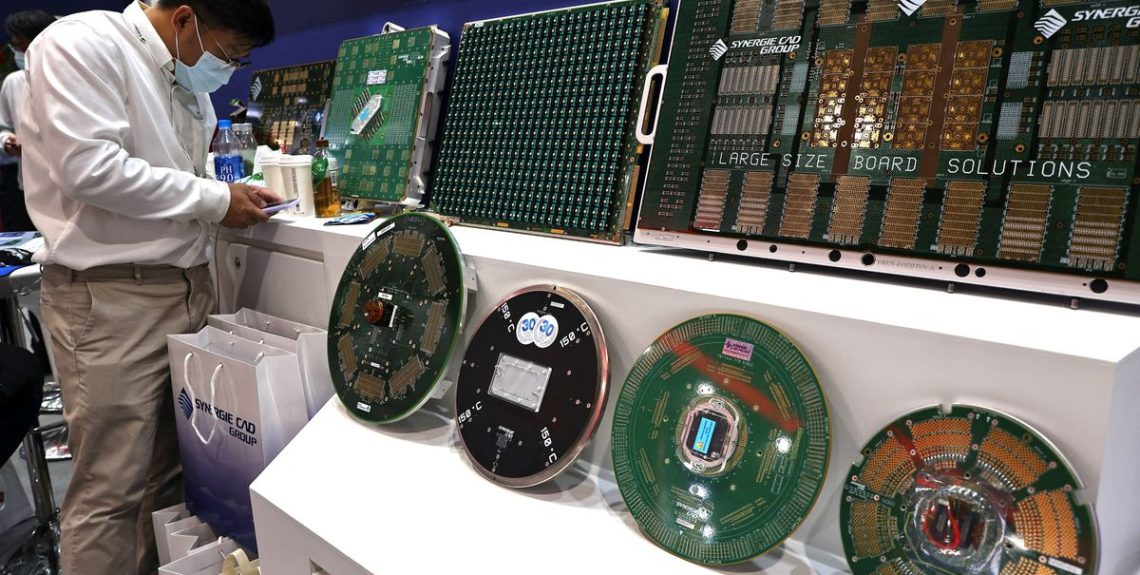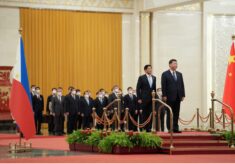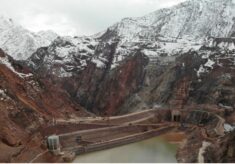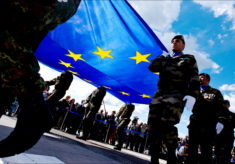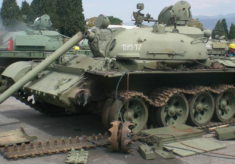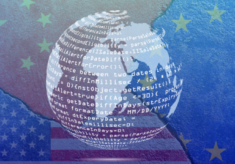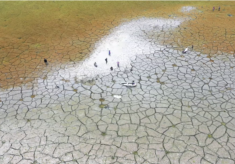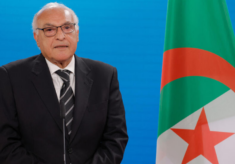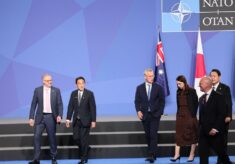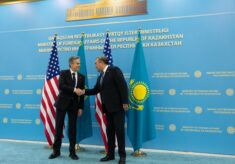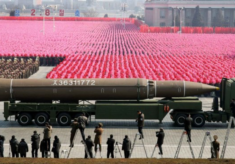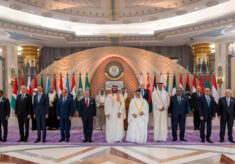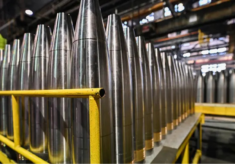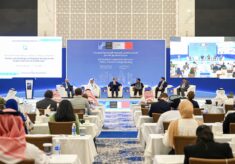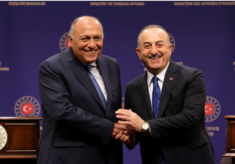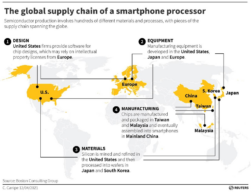
Supply chain networks in the Indo-Pacific are selectively reconfiguring and diversifying from China, due to vulnerabilities from black swan events such as the Covid -19 pandemic and risks regarding weaponization of sensitive technologies, supply chains and rare earth materials. Of particular concern have been semiconductors broadly and Taiwan Semiconductor Manufacturing Company (TSMC) specifically. Given its dominant position of producing 92% of world market share for advanced (10 nanometre or below) chips, and after the Covid-19 pandemic exposed vulnerabilities and shortages in the chip supply chain, TSMC suddenly found itself in the spotlight amidst the U.S.-China technology rivalry. As such, in its attempt to diversify from China, TSMC has looked to Kaohsiung in southern Taiwan as a new manufacturing hub.
What is Kaohsiung’s S Corridor?
On the 8th of August, TSMC and Kaohsiung city government held a ground-breaking ceremony at Nanzih Technology Industrial Park, where its new plant will be built. This is followed in September by visits from Taiwan President Tsai Ing-wen and former US Secretary of State Mike Pompeo to promote Kaohsiung as a new hub for high-tech business investments. TSMC’s Kaohsiung plant would produce 7 nanometre and 28 nanometre chips, the latter used mainly in the automotiveindustry which will be especially important for German auto manufacturers. The chip giant is planning to spend $100 billionin the next years to expand its production capacities within Taiwan, as well as abroad in the U.S and Japan.
Nanzih Technology Industrial Park will become the core zone of Taiwan’s “Southern Semiconductor S Corridor”, a policy priority envisioned by Kaohsiung Mayor Chen Chi-mai’s administration of forming a new technology industrial cluster in Kaohsiung. The project will connect Tainan Science Park, Renwu Industrial Park, Ciaotou Science and Technology Park, and Nanzih Technology Industrial Park in an S-shaped corridor. Besides TSMC, it has attracted other major technology companies such as Germany-based Merck Group, Netherlands-based NXP, Win Semiconductors Corp, and Nanzih Technology Industrial Park is already home to Advanced Semiconductor Engineering (ASE)—Taiwan’s second largest semiconductor company.
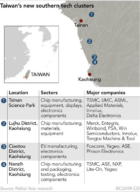
With well-established high-technology clusters in Hsinchu and Tainan, Kaohsiung may seem an odd choice for TSMC given its historic reputation as a “rust belt city” and industrial zone. However, various factors converged over the past year that promulgated Kaohsiung to the fore as TSMC’s choice for domestic expansion.
TSMC already has Fab 18 in Tainan Science Park, and looked to a nearby 300-hectare plot for the next phase of its expansion process. According to a Commonwealth Magazine article, the Southern Taiwan Science Park scheduled expropriation of the land for expansion in 2023, but Kaohsiung’s site offer came in earlier. Kaohsiung is also a traditional stronghold for President Tsai’s Democratic Progressive Party (DPP), as well as for the current Kaohsiung mayor Chen Chi-mai. However, the city’s water supply may be the key reason for TSMC’s selection. In 2021 Taiwan faced its worst drought in 56 years, sending TSMC and other chipmakers scrambling for water needed in their manufacturing process, including using tanker trucks to transport water from Kaohsiung. This incident brought to the fore the real challenge of water scarcity facing the semiconductor industry, including TSMC and Intel fabs in Phoenix, Arizona, as chip companies continue to grapple with scarce supplies of land and water for expansion.
Kaohsiung as potential cooperative security location (CSL) for NATO partners?
With the entry of TSMC in the S Corridor, Kaohsiung and southern Taiwan are emerging as a critical node not only in the global semiconductor supply chain, but also as a key logistics hub in support of President Tsai’s New Southbound Policy for further trade integration in the Indo-Pacific region. Kaohsiung port also the largest port in Taiwan and ranks as the 15thlargest port in the world, ahead of Germany’s Hamburg at positition 17 and America’s Long Beach at 22. As the S Corridor and related tertiary sectors of business and services expand, Kaohsiung is poised to become a key trade logistic hub in the Indo-Pacific.
Moreover, Taiwan defence analysts have proposed that Kaohsiung Port could become a cooperative security location (CSL)now that the U.S. no longer has access to Hong Kong port. This may work in conjunction with NATO’s current exploration for cooperative security and Enhanced Opportunities Partner (EOP) roles for Asian partners such as Japan and South Korea, and possibly Singapore and Taiwan, given they are world leaders in multiple emerging and disruptive technologies (EDT) sectors. Singapore, despite not being a NATO Asian partner, has already been involved in NATO Science and Technology Organization (STO) events. Likewise, Taiwan as a de facto major non-NATO ally (MNNA), could potentially engage in similar cooperative security exchanges especially in the field of maritime technologies.
Some U.S. analysts propose a step further, such as former Secretary Pompeo’s China advisor Miles Yu, who proposed enlarging the NATO alliance to include Indo-Pacific countries into a broader NAIPTO (North Atlantic Indo-Pacific Treaty Organization) in order to confront a rising China. However, others express doubts this would come to fruition at this juncture. NATO Defense College Foundation Director Alessandro Politi noted in an email interview that, “China, unless it follows the path of Russia regarding Taiwan, may not be considered a threat” by many NATO members and surely not a priority as long as the Ukraine conflict is ongoing. He added, “NATO has a very precise geographic definition of its treaty and on this hinges Article 5, even in Kiev’s case.”
As such, the more realistic scenario to enhance security of Transatlantic and Indo-Pacific supply chain for now may not be an expanded NAIPTO military alliance, which would denote decoupling from China, but rather targeted “high-tech alliance” proposed by former NATO Secretary General Anders Fogh Rasmussen. NATO can engage Asian partners in cooperative security of EDT sectors, while continuing economic interdependence and selective diversification from China given it remains a top trading partner for Taiwan, Japan, and other Asian as well as European countries. Indeed even Taiwan’s TSMC recently received an exemption from Washington’s new semiconductor export control regulations, to continue expanding its Nanjing manufacturing facility in China. As James Lewis from the Center for Strategic and International Studies (CSIS) observed, increasing diversification and supply chain sovereignty “does not mean the end of interdependence, but more emphasis on indigenous production and regional supply chains.” To that end, the role of Kaohsiung will likely continue to rise in the ongoing regionalization of the Indo-Pacific high-tech supply chain.
Christina Lin
Dr Christina Lin is a 2022 Taiwan Fellow with Taiwan Ministry of Foreign Affairs and a Guest Scholar at the Department of Asia-Pacific Industrial and Business Management (APIBM), National University of Kaohsiung. She has extensive U.S. government experience working on China security issues and is a contributing author to “NATO and Asia-Pacific” (NATO Defense College, 2016). She has also contributed to the NDCF volume Eastern Europe 2015.

